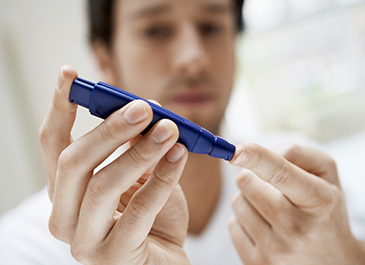Metabolic syndrome is a recently defined condition that is exploding in incidence in North America, leading some experts to call it “the coming storm” in public health. Otherwise known as syndrome X, insulin resistance or pre-diabetes, metabolic syndrome is a group of clinical signs that connect blood sugar imbalances, heart health and weight gain. For patients to fit the diagnosis of metabolic syndrome, three of the five criteria below must be present:
1. Enlarged waist circumference
2. Low HDL (beneficial cholesterol)
3. Elevated triglycerides
4. Elevated blood sugar (glucose) due to insulin resistance
5. Elevated blood pressure (hypertension)
The onset of metabolic syndrome often begins with elevated blood sugar (glucose) due to a diet high in refined carbohydrates combined with a sedentary lifestyle. With prolonged high blood sugar levels the body’s cells become less sensitive to insulin (insulin resistance), the hormone that facilitates the uptake of glucose into cells. Despite this decreased sensitivity, more insulin is produced by the pancreas organ in response to the high blood sugar. This leads to a “vicious cycle” of increasing insulin and blood sugar which will eventually lead to the development of diabetes.
Approximately 25% of the North American population fit the criteria for metabolic syndrome, with an increasing incidence after the age of 35. Diet and lifestyle interventions are the key to reversing metabolic syndrome and preventing more serious diseases like diabetes from developing. Weight loss through diet changes and exercise is the main focus of treatment. Losing excess weight can moderately lower blood pressure, decrease total cholesterol and increase insulin sensitivity, which helps normalize blood sugar levels. Smoking cessation and stress reduction have also been shown to decrease insulin resistance.
Physician assessment and monitoring of patients with metabolic syndrome is essential to ensure appropriate treatment measures are being taken. Blood pressure, cholesterol, triglyceride and blood sugar testing are required. In addition, a new breath test called the DiaTest has been shown to be a more accurate and sensitive measure of insulin resistance than fasting blood sugar levels. It is appropriate for diagnosing the earliest stages of insulin resistance, sometimes before blood sugar levels are abnormal, and also monitoring treatment effectiveness. The DiaTest is available through many local naturopathic physicians.
As the diabetic consequences of metabolic syndrome can be very serious, consulting a physician who is knowledgeable about assessing and treating the condition is important. Treatment plans must be individualized to address each patient’s unique situation. With the early diagnosis of metabolic syndrome followed by significant diet and lifestyle modifications, many cases of diabetes can be prevented!
References: Insulin Resistance: The Metabolic Syndrome X; Reaven & Laws, Humana Press, 1999. 13C Glucose Breath Test for Insulin Resistance; Rocky Mountain Analytical Laboratory, 2005. Insulin Resistance Syndrome: Nutritional Supplements; Clinical Essentials, HealthNotes, 2005.
Dr. Arjuna Veeravagu is a naturopathic physician, registered acupuncturist and founder of Sage Clinic in Yaletown. More information about Sage Clinic can be found at www.sageclinic.com. To schedule a consultation with Dr. Veeravagu please email info@sageclinic.com or call (604) 697-0397.

